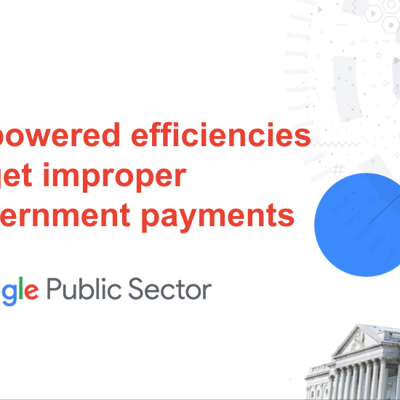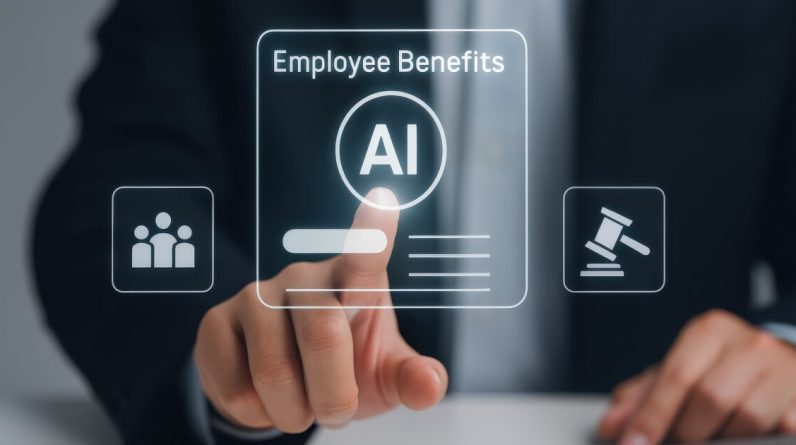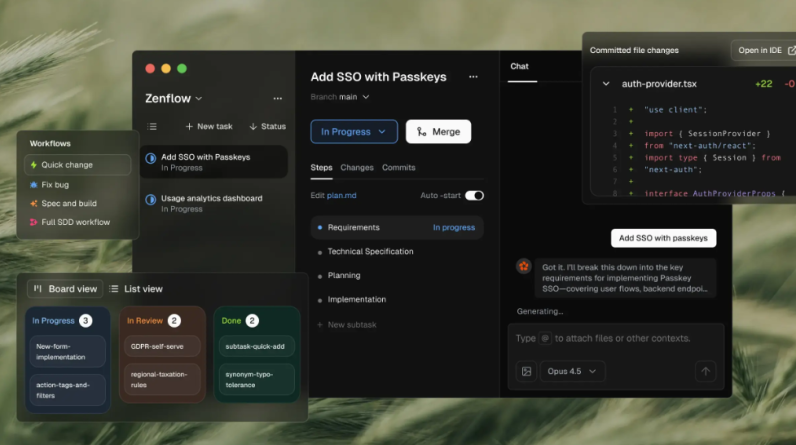
According to the Government Accountability Office (GAO), federal improper payment estimates have totaled about $2.8 trillion since FY 2003. As an intensified focus on efficiency across government brings greater scrutiny to spending and concerns about financial waste, AI-enabled solutions offer federal agencies strategies and tools for mitigating and preventing these losses.
Prevention starts with users and experience
Often improper payment can result not from mishandling by the workforce, but with inefficiencies in the process itself. Streamlining and improving user experience, which has been a priority for government in recent years, not only results in greater satisfaction with public services, but also in faster, more accurate processes.
“If we can improve the citizen experience on the front end, to make it as error-free and as efficient as possible, we can actually minimize the potential improper payment outcome,” said Chris Niehaus, strategic growth executive at Google Public Sector.
For example, consider disability claims processed by the Social Security Administration. The process from start to finish averages more than 200 days. This is inefficient in terms of time and workflow and also leaves significant room for error. With a wait time of the better part of a year, an individual’s disability or employment status could change after initial filing, resulting in improper payment based on the original claim.
“For us, it’s about trying to help the government use technology to improve workflows and the citizen experience as much as possible, so that it becomes more intuitive, more natural, faster, and much more accurate,” Niehaus said. “So that you don’t have as much human toil.”
Automation via AI solutions are an essential tool for improving experiences of both citizens and the workforce that serves them. For disability claims, tasks that might be automated include verifying medication labels, transcribing information, digitizing forms, and more. Throughout the claims process, filers may also submit information in numerous formats — on paper, through images, or during phone calls.
“Our Gemini models are multimodal right out of the gate,” Niehaus said. “Whether it’s speech, whether it’s pictures, video or text, we’re able to bring all of that into one AI model, which means one AI solution for our customers.”
The power of Gemini will now also be available to government agencies via one comprehensive AI platform through the recently announced Gemini for Government offering. Through a partnership with the General Services Administration (GSA), in support of its OneGov strategy, Gemini for Government brings together AI-optimized cloud services, Gemini models, agentic capabilities and more — all at a low cost.
This streamlined approach coupled with the sophistication of Google AI models has the potential to transform how the government uses AI. For example, AI tools can help build a medical history for examiners to review, pulling together, summarizing and collating data from different sources within one model. Picture reducing a process of 200+ days to just a week, and the efficiencies that could bring on all fronts.
“We can also use AI to actually help adjudicate information against existing policies to then make a very high-accuracy determination of whether a proper payment should be made,” Niehaus said. “If you can compress that workflow down and improve accuracy, then you’re going to end up with a much lower rate of improper payments.”
Starting at the front end with the people — the user, the government staff, and their experiences — and leveraging AI to improve and speed processes, eliminates risks and results in a major positive impact on the legitimacy of payments at the back end.
Use case: Wisconsin Department of Workforce Development
Amid the deluge of claims filed due to the COVID-19 economic complexities, Wisconsin’s DWD discovered its legacy infrastructure couldn’t keep up. With the help of Google Cloud, the DWD was able to speed response times and screen out fraudulent claims, ultimately clearing backlogs and disbursing billions in unemployment benefits. Learn more.
When financial mismanagement is intentional
Of course, not all improper payments are accidental. GAO estimates the federal government loses $233 to $521 billion annually due to fraud, and state and local governments also experience the consequences of malicious actors. Just as AI helps reduce mistaken financial waste, it can also help uncover suspicious behavior.
In Ohio, the Department of Job and Family Services (ODJFS), facing significant fraudulent unemployment claims, launched an initiative to better discover and resolve fraudulent activity. Part of the initiative included the deployment of a solution using analytics, machine learning and predictive modeling to flag suspicious claims requiring extra scrutiny.
By using automation to highlight potential fraud, the state was able to more quickly identify, investigate and resolve false claims, which then gave staff more time and resources to devote to disbursing funds for legitimate claims and resolving appeals. The agency reported that it was able to issue more than 558,000 appeals compared to its previous typical volume of 45,000. Moreover, through partnering with financial institutions to share data about potential fraud, the state was able to recover nearly $398 million in fraudulent unemployment benefits.
“They were able to claw those funds back, in partnership with the banks, and it went back into the federal coffers,” Niehaus said. “That’s a case where you’re using AI to look purely at data, what is the data telling you that is indicating fraudulent behavior? … And it also speaks to interoperability and the importance of sharing data.”
Whether accidental or intentional, financial mismanagement and improper payments are a drain on federal funds that extends all the way through state and local governments receiving them. As AI and machine learning continue to evolve and advance, they offer significant benefits in not only identifying and resolving improper payments, but streamlining processes and enhancing delivery of public services.
Learn more about Google Public Sector leverages AI and emerging technologies to bring greater efficiency to government agencies.





